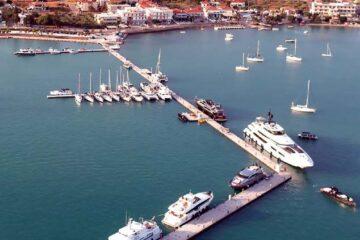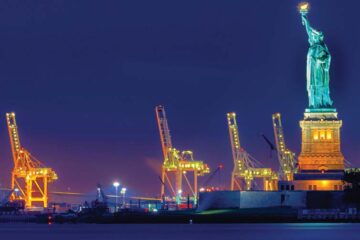The world of docks, piers and wharfs in today’s world comprises a plethora of different designs, component structures, services and uses. As such, technology refinements now require a much closer review of these structures than perhaps has been completed in the past. Whether for marinas or commercial piers, understanding the total operation as well as the components making up the structure is a necessity if one is to properly understand the exposures that these structures represent.
Valuing Piers & Docks
There is no precise formula for calculating the present and in some cases replacement cost of these structures. Today, major repairs or pier replacement needs to be professionally designed and to be in full compliance with all environmental regulations. There can be many “hidden” issues and costs involved when repairs are made as a result of a loss or in the rebuilding of the piers. There must be a proactive approach to understanding these issues, and the use of a competent marine contractor and loss control professional can result in the proper assessment.
Ask any marina owner, underwriter, marine claims representative or loss control person about how to properly value pier and docks and each will probably come up with a different way. Usually there is the replacement cost approach, the agreed value approach, and then the very popular market value approach. There has been everything from amicable discussions right through to arguments about the subject of valuing piers and docks. So what is the answer? Is there a magic formula? How will it work for all parties involved? This paper will try to provide some guidance on the thought process of what actually goes into valuing piers and docks. There are no specific valuation guidelines similar to Marshall Swift / Boeckh. So we will begin with understanding the different components that need to be assessed before we can begin to value piers and docks.
Pier Components
When one first looks at a particular pier and dock, the items that come to mind include all the components that make up the structure that goes into the water. It includes the pile structure, cross supports of different types, the walkway, and the bulkhead that may be on the shore side of the pier. And as you have correctly surmised, there is a plethora of different types of materials that may be used to construct these components. In some cases there are some very sophisticated underwater anchoring systems and different types of components to secure the pier. Also, many marinas have can moorings for their customers, bringing in another different component to the valuation. These structures however are just the beginning of additional components that may make up the piers.
In most marina scenarios there is the addition of electrical, water, fueling, waste removal, cable, and even telephone lines to consider. For commercial piers, there may be additional service lines such as steam, welding gases, and other systems.
Also, pier structures can include launching areas (include ramps of all different construction types), bulkheads, attenuation components, and breakwaters. So as we begin to think about valuation, we must first identify all of the components and their makeup in order to determine a value.
Components of Age and Maintenance
Adding to valuation are the varying ages and the observed maintenance of these components. As we are all painfully aware, older and poorly maintained piers will significantly increase the cost of repairs as they will be less likely to withstand any type of loss. So how do age and maintenance impact valuation?
The components will each have a typical useful life, usually provided by the manufacturer. Maintenance has a direct relationship to the useful life; poor maintenance practice will generally take away from the useful life while good maintenance practices will generally add to it. Before we assume that maintenance has more impact on the value of a pier, remember that age will also come into play, as eventually any component will need to be replaced.
Good maintenance involves preventative steps such as routine inspections of all components both above and below the water and upkeep and ultimately replacement as they wear. Each of the components should have specific maintenance and replacement schedules that are best obtained from the manufacturer.
Inspections, as well as maintenance and repair efforts, should be documented by the marina facility in writing. These records should be maintained and available for review by the underwriter and loss control professional.
The bottom line is routine inspection, maintenance and repair of any given Dock, Pier, Marina or Waterfront Structure is of the utmost of importance when considering the the life expectancy of any Marine Structure.









